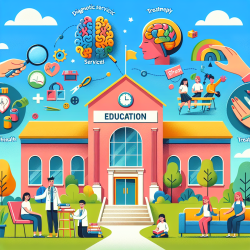Introduction
Understanding the unique needs of Latino adolescents is crucial for practitioners aiming to create impactful interventions. The research article titled Latino Parents’ and Adolescents’ Perceptions of the Needs and Issues of Adolescents in Their Community provides valuable insights into the priorities and concerns of Latino families. This blog post will explore how practitioners can leverage these findings to enhance their skills and improve outcomes for Latino adolescents.
Key Findings from the Research
The study involved 892 parent-adolescent dyads, focusing on six key areas: education and career planning, abuse and victimization, adolescent behavior problems, adolescent sexuality, socioeconomic stressors, and relationships. Notably, parents rated all factors as more important than adolescents, highlighting a generational concern gap.
Both parents and adolescents prioritized education and career planning as the most critical need, followed by abuse and victimization, and adolescent behavior problems. This consensus underscores the importance of addressing these areas in interventions.
Implications for Practitioners
Practitioners can enhance their skills by focusing on the following strategies:
- Educational Support: Develop programs that support educational aspirations and provide resources for college and career planning. This aligns with the high priority both parents and adolescents place on education.
- Addressing Abuse and Victimization: Implement interventions that address physical and sexual abuse, ensuring that both adolescents and parents feel supported and informed.
- Behavioral Interventions: Create programs targeting adolescent behavior problems, such as violence and substance abuse, with a focus on prevention and education.
Encouraging Further Research
While the study provides a comprehensive overview, further research is needed to explore the nuances of generational and cultural differences. Practitioners are encouraged to conduct localized needs assessments to tailor interventions effectively. Understanding the complex interplay of acculturation and generational differences will enhance the effectiveness of programs.
Conclusion
Practitioners working with Latino adolescents can significantly benefit from the insights provided by this research. By focusing on education, addressing abuse, and implementing behavioral interventions, practitioners can create meaningful change. To delve deeper into the study, I encourage you to read the original research paper: Latino Parents’ and Adolescents’ Perceptions of the Needs and Issues of Adolescents in Their Community.










